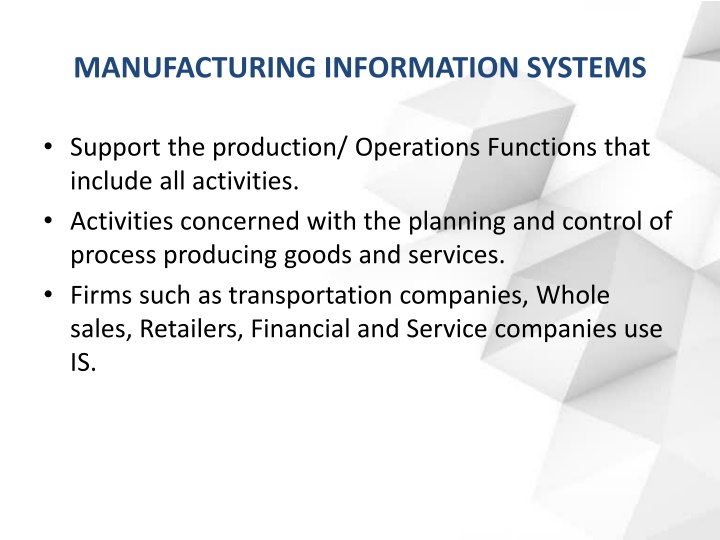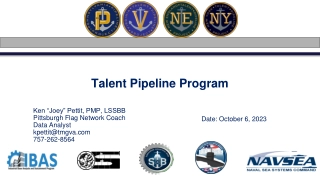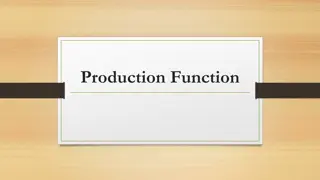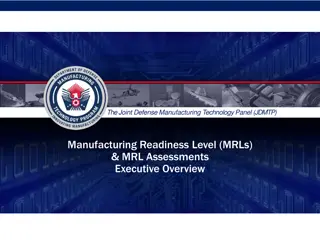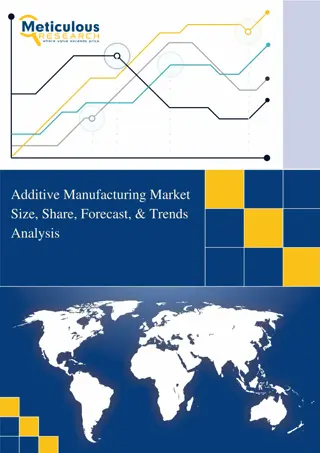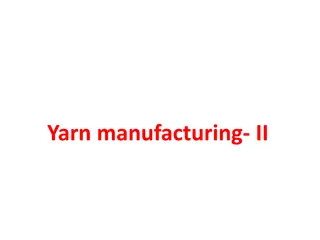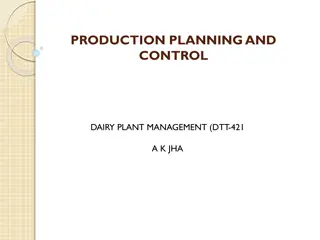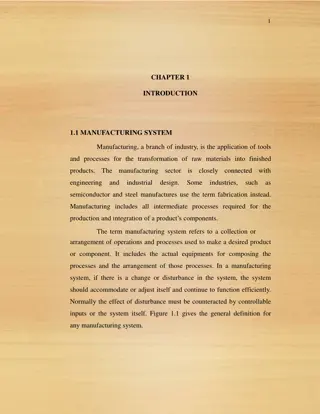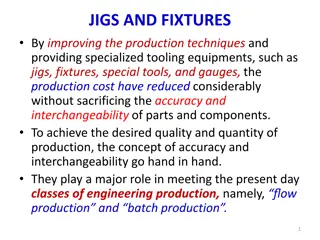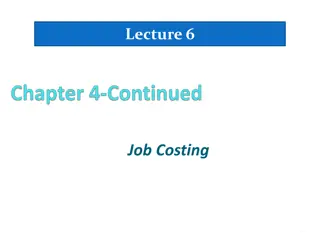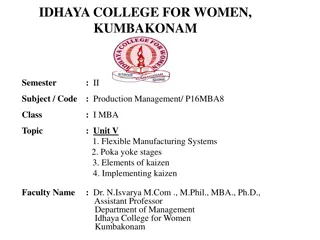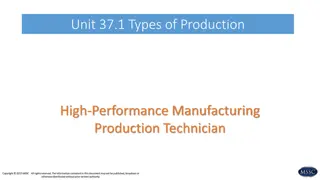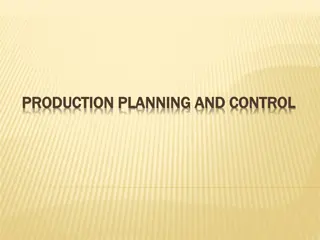Manufacturing Information Systems Support Production Operations
"Manufacturing Information Systems (MIS) play a crucial role in supporting production operations across various industries such as transportation, wholesale, retail, finance, and services. MIS encompasses activities like planning, process control, resource planning, production forecasting, quality control, and more. It involves systems like Computer Integrated Manufacturing (CIM) that aim to simplify, automate, and integrate production processes for flexible and high-quality manufacturing. CIM benefits include improved productivity, quality control, and customer satisfaction. Engineers utilize engineering systems and collaborative manufacturing networks to enhance product design, production processes, and communication within and outside the company."
Download Presentation

Please find below an Image/Link to download the presentation.
The content on the website is provided AS IS for your information and personal use only. It may not be sold, licensed, or shared on other websites without obtaining consent from the author.If you encounter any issues during the download, it is possible that the publisher has removed the file from their server.
You are allowed to download the files provided on this website for personal or commercial use, subject to the condition that they are used lawfully. All files are the property of their respective owners.
The content on the website is provided AS IS for your information and personal use only. It may not be sold, licensed, or shared on other websites without obtaining consent from the author.
E N D
Presentation Transcript
MANUFACTURING INFORMATION SYSTEMS Support the production/ Operations Functions that include all activities. Activities concerned with the planning and control of process producing goods and services. Firms such as transportation companies, Whole sales, Retailers, Financial and Service companies use IS.
MANUFACTURING INFORMATION SYSTEM Manufacturing Resource Planning System System Manufacturing Evaluation Engineering System Production Forecasting Shop Floor Scheduling Computer Aided Design Shop Floor Control Production Scheduling Material Requirement s Planning Capacity Planning Production Cost Control Computer Aided Engineering Machine Control Computer Aided Planning Robotics Control Products Simulation and Prototyping Process Control Quality Control Computer Integrated Manufacturing (CIM)
COMPUTER INTEGRATED MANUFACTURING (CIM) Variety of manufacturing IS support CIM. Overall Concept that stresses the following Objectives Simplify ( Reengineer Production Process) Automate ( Production Process) Integrate (Production and support Process The overall goal of CIM and MIS is to create Flexible, agile manufacturing process that produce products of high quality. CIM Supports Flexible manufacturing system (FMS), Total Quality Management (TQM).
BENEFITS OF CIM Flexible production Process. High Quality Products. Work Simplification, Automation and Integration. Improved Utilization of Production Facilities. Higher Productivity and Better Quality Control from Feedback. Reduced investments in inventories. Customer Satisfaction by reducing Out-of-Stock operations.
ENGINEERING SYSTEMS Engineers use Computers to design better Products using Computer Aided Engineering (CAE) Computer Aided Design (CAD) To Design the better production process, they use Computer Aided Process Planning.
COLLABORATIVE MANUFACTURING NETWORKS Using the internet, intranet, Extranet and other networks to link the work stations of Engineers with their colleagues at other site. Also link the employees within company and customers or suppliers where they may be located. For Example, Automotive systems Groups is linked with Ford. The engineers uses the Computer network to discuss on car seat design, production issues and delivery schedules.
MANUFACTURING EXECUTION SYSTEMS (MES) Performance monitoring information systems for factory floor operations. They monitor, track and control 5 Essential Components viz., Materials Equipments Personnel Instructions and specifications Production facilities MES also includes Shop floor scheduling Shop floor control Machine control Robotics control Process Control
PROCESS CONTROL Use of computers to control an ongoing physical process Process control computers control physical process in petroleum refineries, cement plants, Steel plants, Chemical plants, Pulp and Paper mills and Electric power plants. Special purpose microcomputer systems Requires Special sensing devices The devices measures physical phenomenon such as temperature or pressure. These measurements are converted into digital forms by converters. Process control Software is used to analyze the data generated by physical process. The results are compared with standards. Periodic and Demand reports are produced.
MACHINE CONTROL Use of Computers to control the activities of a machine (Numeric Control) Numeric control programs convert engineering drawings and machining instructions into numeric code of commands. Involves use of special purpose micro computers called Programmable Logic Controllers (PLC). PLC operates one or more machines according to the directions of numeric control program. Specially equipped PC s are used to develop and install Numeric Control program in PLC. Fine-Tune machine tool performance.
ROBOTICS Development in machine control. Creation of smart machines and robots. These devices directly control their own activities with the aid of computers. Robotics is the technology of building and using machines (Robots). Computer Intelligence, Computers-Controlled human like capabilities like movement and vision. Robots are Steel Collared Workers . Increase Productivity and cut Costs.
For example, a robot can assemble compressor valves with 12 parts a the rate of 320 units per hour, which is 10 times the rate of human workers. Used in hazardous areas. Robots follow the programs given by the server. Input is received from visual/tactile sensors, processed by micro computers and translated into movements of the robots. For example, movement of hands to pick up and land items.
MANUFACTURING RESOURCE PLANNING The planning of types of materials needed in production process is called Material Resource Planning (MRP). Integrating MRP with production scheduling, shop floor operations is known as Manufacturing Resource Planning . COMPUTER-AIDED MANUFACTURING Systems that automate production process. This could be accomplished by/through MES
